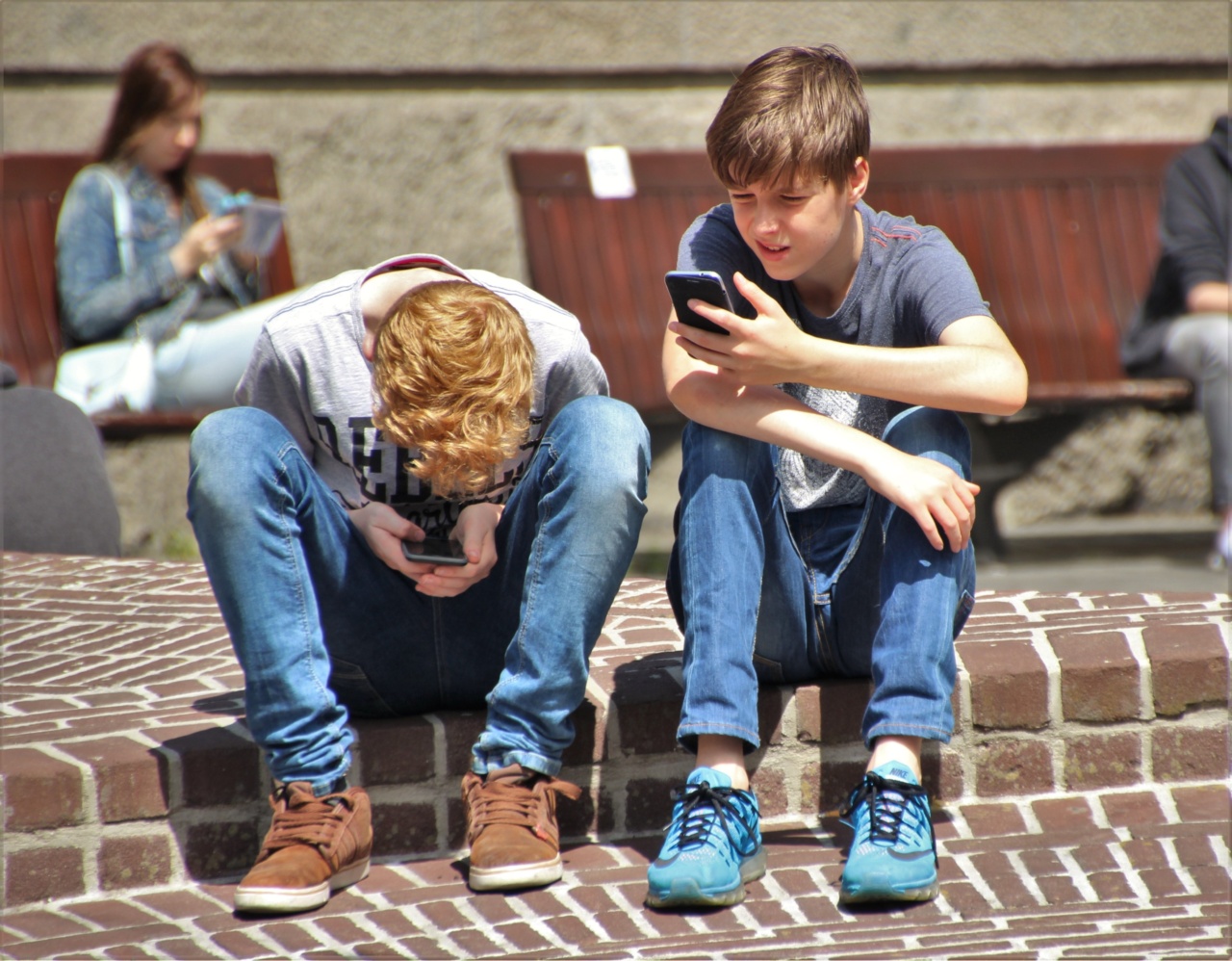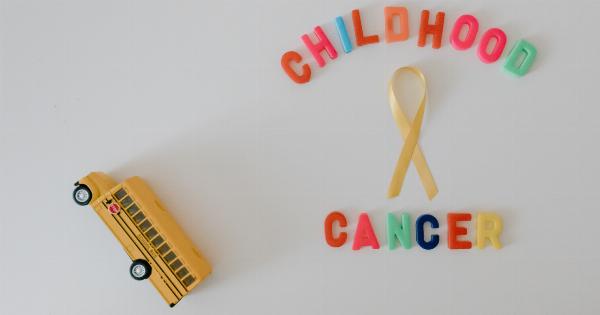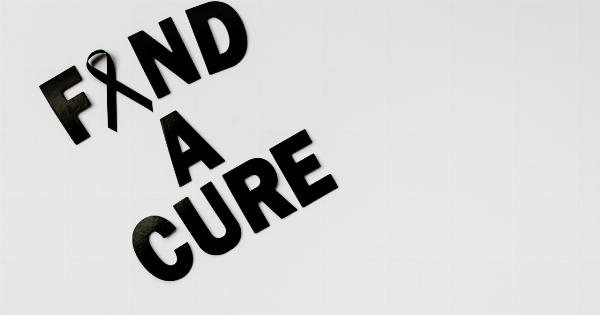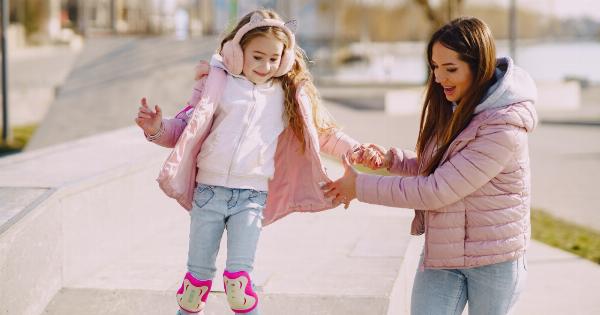Cancer, a term that strikes fear into the hearts of millions, is typically associated with older adults. However, while it may come as a surprise to many, cancer is not limited to just the elderly population.
In fact, children and teenagers can also be affected by this devastating disease.
Understanding Pediatric Cancer
Pediatric cancer refers to any form of cancer that affects children and adolescents. While childhood cancer is relatively rare compared to cancer in adults, it remains a significant concern, especially for parents.
The types of cancers found in children and teenagers differ from those seen in adults, as do the treatment approaches.
Types of Cancer in Children and Teens
There are several types of cancer that are more commonly found in children and adolescents compared to adults. These include:.
1. Leukemia: This is the most common type of cancer in children and teenagers, accounting for around 30% of all cases. Leukemia affects the production of normal blood cells, leading to an overabundance of abnormal cells.
2. Brain and Central Nervous System (CNS) Tumors: Brain tumors are the second most common type of cancer in children, with various forms depending on the location and cell type involved.
CNS tumors can cause a range of symptoms and may require surgery, radiation therapy, or chemotherapy for treatment.
3. Neuroblastoma: Typically found in infants and young children, neuroblastoma is a cancer that originates in nerve tissue. It often starts in the adrenal glands, which are located on top of the kidneys, and can spread to other areas of the body.
4. Wilms Tumor: Also known as nephroblastoma, this type of cancer primarily affects the kidneys. It is most commonly diagnosed in children between the ages of 3 and 4 and can lead to abdominal pain, swelling, and blood in the urine.
5. Retinoblastoma: Retinoblastoma is a cancer that begins in the retina, the innermost layer at the back of the eye. It usually occurs in children under the age of 5 and can result in impaired vision or complete loss of vision in the affected eye(s).
6. Sarcomas: These are cancers that develop in the bones, muscles, or soft tissues of the body. They are relatively rare but can affect children and adolescents. Examples of sarcomas include osteosarcoma, Ewing sarcoma, and rhabdomyosarcoma.
Symptoms and Diagnosis
Recognizing the symptoms of cancer in children and teenagers can be challenging, as many of them can be associated with other common illnesses or conditions. Some general signs include:.
– Unexplained weight loss
– Fatigue and lethargy
– Recurrent fevers or infections
– Pain, particularly in bones or joints
– Swelling or lumps
– Changes in vision
– Frequent headaches
– Paleness or excessive bruising and bleeding
– Changes in balance or coordination.
If these symptoms persist or worsen, it is essential to consult a healthcare provider for proper evaluation. Diagnosing cancer in children often involves a combination of physical examinations, blood tests, imaging studies, and potentially biopsies.
Treatment and Prognosis
The treatment approach for pediatric cancer depends on various factors, including the type and stage of the cancer, the child’s age and overall health, and the potential side effects of treatment. The primary treatment modalities include:.
– Surgery: Surgical intervention may be necessary to remove tumors or biopsy affected tissues.
– Chemotherapy: This involves the use of powerful drugs to kill cancer cells throughout the body. It can be administered orally, intravenously, or directly into specific areas.
– Radiation therapy: High-energy beams are used to target and destroy cancer cells. It is especially useful for tumors that are localized or have a high risk of returning.
– Immunotherapy: This innovative treatment method utilizes the body’s immune system to recognize and attack cancer cells. It can help improve outcomes and reduce the risk of recurrence.
– Stem cell transplantation: In some cases, especially for certain blood cancers, stem cell transplantation may be necessary to replace unhealthy cells with healthy ones.
The prognosis for children and teenagers with cancer varies significantly depending on the type and stage of the disease, as well as how early it is detected and treated.
Advances in medical technology and treatment options have improved survival rates in recent years.
The Emotional Impact
When a child or teenager is diagnosed with cancer, the emotional impact on the entire family can be overwhelming. Parents are often faced with feelings of shock, grief, and helplessness.
Siblings may struggle to understand what is happening, while the affected child may experience fear, confusion, and distress.
During this challenging time, it is crucial to have a strong support system in place.
Connecting with other families going through similar experiences, seeking counseling or therapy, and accessing local resources can all help in coping with the emotional burden of pediatric cancer.
Research and Innovations
Despite being a relatively rare disease, pediatric cancer has garnered significant attention from the medical and scientific communities.
Researchers worldwide are dedicated to understanding its causes, improving treatment outcomes, and developing new therapies with fewer long-term side effects.
One area of ongoing research is targeted therapies, which focus on specific genetic mutations or characteristics of cancer cells.
This approach aims to minimize the damage to healthy cells and reduce the risk of debilitating side effects commonly associated with traditional treatments like chemotherapy and radiation therapy.
Additionally, clinical trials are instrumental in exploring new treatment options for pediatric cancer. These trials allow children and teenagers to access experimental therapies that may not yet be widely available.
Participation in clinical trials is always voluntary, and careful consideration is given to the potential risks and benefits.
Supporting Organizations and Advocacy
Various organizations and advocacy groups play a crucial role in supporting children and teenagers with cancer, as well as their families.
These organizations often provide emotional support, financial assistance, and resources for education and awareness.
Some well-known organizations include:.
1. St. Jude Children’s Research Hospital: St. Jude offers not only state-of-the-art treatment but also ensures that families do not receive any medical bills for their child’s care.
2. Make-A-Wish Foundation: This organization grants wishes for children with critical illnesses, including pediatric cancer, providing them and their families with much-needed moments of joy and respite.
3. Children’s Oncology Group (COG): COG is the world’s largest organization dedicated to childhood and adolescent cancer research. They conduct clinical trials and research studies to improve outcomes for young cancer patients.
Education and Awareness
Education and awareness about pediatric cancer are essential to promote early detection, increase research funding, and provide better support for affected children and their families.
Various campaigns and events are organized worldwide to shed light on this issue and raise funds for further research.
It is crucial for parents, educators, and healthcare providers to recognize the signs and symptoms of pediatric cancer and advocate for early intervention.
By staying informed, spreading awareness, and supporting research efforts, everyone can contribute to improving the lives of children and teenagers faced with this challenging disease.
In Conclusion
While cancer in children and teenagers may be relatively scarce compared to adults, its impact is no less severe.
Understanding the different types of pediatric cancer, recognizing the symptoms early, and advocating for improved treatments and support systems are all essential aspects of addressing this challenging disease. With ongoing research and increased awareness, we can strive to ensure that every child and adolescent receives the timely and effective care they need.



























